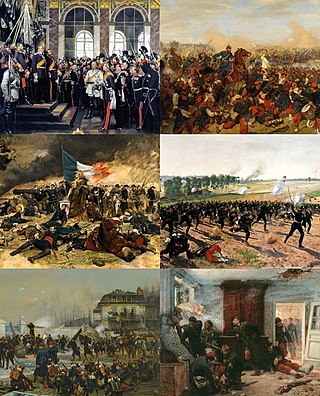
The Franco-Prussian War or Franco-German War, often referred to in France as the War of 1870, was a conflict between the Second French Empire and the North German Confederation led by the Kingdom of Prussia. Lasting from 19 July 1870 to 28 January 1871, the conflict was caused primarily by France's determination to reassert its dominant position in continental Europe, which appeared in question following the decisive Prussian victory over Austria in 1866. According to some historians, Prussian chancellor Otto von Bismarck deliberately provoked the French into declaring war on Prussia in order to induce four independent southern German states—Baden, Württemberg, Bavaria and Hesse-Darmstadt—to join the North German Confederation; other historians contend that Bismarck exploited the circumstances as they unfolded. All agree that Bismarck recognized the potential for new German alliances, given the situation as a whole.
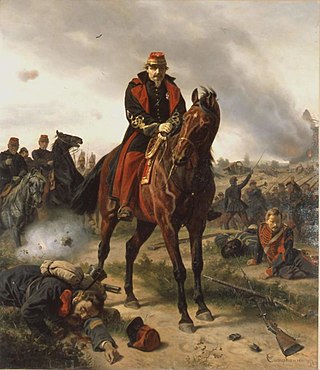
The Battle of Sedan was fought during the Franco-Prussian War from 1 to 2 September 1870. Resulting in the capture of Emperor Napoleon III and over a hundred thousand troops, it effectively decided the war in favour of Prussia and its allies, though fighting continued under a new French government.

Louis Jean-Baptiste d'Aurelle de Paladines was a French general.

The Battle of Le Mans was a German victory during the Franco-Prussian War that ended French resistance in western France.

The Second Battle of Orléans was a battle of the Franco-Prussian War of 1870. It took place on December 3 and 4, 1870 and was part of the Loire Campaign. The Germans recaptured Orléans, which had been retaken by the French on November 11, 1870 after the Battle of Coulmiers, and divided the French Army of the Loire in two. Future king of Serbia, Peter, took part in the battle on the French side. The French lost 19,000 men in two days of combat, including 12,000 prisoners as well as 74 guns and four gunboats. German manpower losses amounted to 1,746, of which 353 killed or dead of wounds, 1,327 wounded and 67 missing. The Germans lost 368 horses, including 175 killed, 183 wounded and 10 missing.
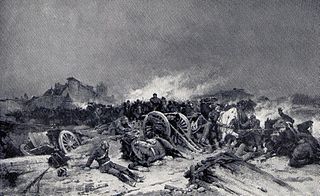
The Battle of Beaune-la-Rolande on 28 November 1870 was a battle of the Franco-Prussian War, won by Prussia. In an attempt to relieve the Siege of Paris, French General Crouzat's XX Corps launched an attack against three Prussian brigades resting in Beaune-la-Rolande. These brigades were from the Prussian X Corps which was detailed to guard the flanks and rear of the force besieging Paris and provide early warning of any French counter-attacks. The French committed a force of 60,000 men, largely conscripts of the Garde Mobile, and 140 guns against the Prussians' 9,000 men and 70 guns, mostly drawn from regular troops. Despite the overwhelming superiority of numbers the French attack failed to take the village and was ultimately forced to retreat by Prussian reinforcements.
Events from the year 1870 in France.
The Armée de la Loire was a French army of the Franco-Prussian War. It was formed in October 1870 by Léon Gambetta, interior minister and minister for war in the Government of National Defence, then taking refuge in Tours after the French defeat at Sedan on 2 September 1870 had destroyed the Imperial field army. The newly raised force was formed out of francs-tireurs, provincial Gardes Mobiles (territorials), naval forces, zouaves and tirailleurs from Algeria, plus regular soldiers in depots and reservists. Together these diverse units formed the 15th army corps under Joseph Édouard de la Motte Rouge. Apart from the North African units, the Army had few officers with fighting experience, insufficient artillery, and its troops were under-trained. It fought at the Battle of Orléans (1870) and Battle of Le Mans (1871) and was dissolved on 14 March 1871.
The Battle of Beaugency was a battle of the Franco-Prussian War contested between the army group of the Grand Duke of Mecklenburg, and the French Armée de la Loire, won by the Prussians. It lasted from 8 to 10 December 1870 and occurred on the left bank of the river Loire to the northwest of the town of Beaugency. Due to the large area over which it was fought, it is also known as the Battle of Beaugency-Cravant or the Battle of Villorceau-Josnes.

The Battle of Villepion was a battle between the French XVI Corps under General Chanzy and the I Bavarian Corps during the Franco-Prussian War. It occurred in the district of Terminiers, between Terminiers and Nonneville on 1 December 1870, and ended in a French victory.
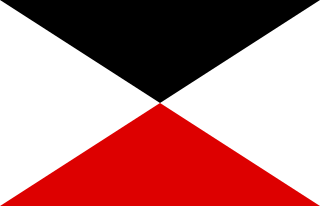
The I Royal Bavarian Army Corps / I Bavarian AK was a corps level command of the Royal Bavarian Army, part of the German Army, before and during World War I.
The Battle of Châtillon, also known as the Battle of Châtillon-sous-Bagneux, was a skirmish in the Siege of Paris between France and North German Confederation in the Franco-Prussian War, took place on 13 October 1870. This is also considered the first battle in the history of the French Third Republic. In this fierce battle – occurred at Châtillon and Sceaux, Corps V of the Prussian army under the command of Lieutenant General Infantry Hugo von Kirchbach, along with the II Corps of the Kingdom of Bavaria by the Supreme Minister infantry Jakob von Hartmann which were the forces of the army Group 3 of Prussia by Prince Friedrich Wilhelm as General command., won a victory against an attack by the XIV Corps under General Renault - of the French army under General Auguste-Alexandre Ducrot. Although some soldiers under Ducrot fought well, the majority of his army became agitated. The French were forced to flee to Paris, losing the Châtillon Plateau - a very favorable defensive position overlooking the fortresses south of Paris - to the Germans. This was a disaster for the "justice" of the French army during the war, although the French reported that they suffered only minor losses.

The Battle of Châteaudun was a battle in northwestern France during the Franco-Prussian War, which took place on October 18, 1870. In this battle, the Imperial German Army led by General Friedrich Wilhelm Ludwig von Wittich attacked the city of Châteaudun and captured the city. During the nine-hour battle the attackers defeated forces that included Francs-tireurs led by Ernest de Lipowski who was of Polish origin. Although it ended in defeat, the resistance of the French army at Châteaudun is recorded by one document as legendary. The fighting at Châteaudun was immortalized by a painting by Philippoteaux.
The Battle of Dreux was a battle during the Franco-Prussian War, which took place on 17 November 1870. In this brief and drastic battle, the Prussian army who was commanded by Grand Duke Freidrich Franz II beat the French army who was commanded by Captain Keratry who ordered across the frontline and forcing the French to hurriedly flee, despite the numerical advantage of the French. The primary importance of the Prussian victory over Dreux in strengthening the frontline to its farthest and to weaken the French further to continue the Siege of Paris, and facilitate Minister Ludwig von der Tann of Bavaria who coordinated with Prince Friedrich Karl of Prussia to attack the French army under General Louis d'Aurelle de Paladines.
The Battle of Chateauneuf-en-Thimerais was a battle of the Franco-Prussian War, which took place on November 18, 1870, in the commune of Châteauneuf-en-Thymerais in France. This was one of a series of victories by a division of the Prussian army along the Loire under the command of Frederick Francis II, Grand Duke of Mecklenburg-Schwerin before the Garde Mobile's forces fledgling by commander Minister Fiereck, within a week after the Imperial German Army was defeated at the Battle of Coulmiers. During the Battle of Châteauneuf-en-Thimerais, the 22nd Division of the Kingdom of Prussia – noted as a brave division – was under the command of General Friedrich Wilhelm Ludwig von Wittich who captured the commune, taking in his hands hundreds of French prisoners of war. The failure at this battle forced the French forces to retreat westward.

The Battle of Artenay' also known as the Battle of Arthenay, is a battle in the Franco-Prussian War, was held on October 10, 1870, in Artenay a small town located on the road from Orléans to Paris, France which was about 10 miles north of the city of Orléans. In this fierce battle, with superior strength compared to the opponent, The I Corps of the Kingdom of Bavaria, under the command of Lieutenant General Ludwig von der Tann-Rathsamhausen, in collaboration with the 22nd Division of the XI Corps of the Kingdom of Prussia and the two cavalry divisions of the Prussian army attacked and penetrated the defense system of the army of the Loire of the young French Republic, under the control of general Joseph Edouard de la Motterouge, causing heavy losses for the French military of which many people were taken prisoner. The winning conditions Artenay were favorable enough for Von der Tann to strike Orléans, while the forces of France knocked back on Orléans forest in an agitated state. Despite this, Nièvre's Garde Mobiles and the Pontifical Legion in the French army were noted for their strong resistance, while a monk in Prussian Cavalry under the command of Prince Albrecht demonstrated his prowess in the battle at Artenay.
The Battle of Ladon and Mézières was a battle fought at Ladon and Mézières-en-Gâtinais between the French Army of the Loire led by Louis d'Aurelle de Paladines and Imperial German Army led by Prince Friedrich Karl of Prussia on November 17, 1870. During the battle the Prussians forced the French forces to retreat into the Bellegarde woods. Although the French army was quickly defeated in this battle, it showed the Prussians the substantial size of the French XX corps. the engagement showed the Germans that substantial forces of the French XX Corps were present on the battlefield. The defeat caused great damage to French morale. On November 17 the French attacked the Prussians again at the Battle of Beaune-la-Rolande, but they were defeated again.

The Battle of Varize was a battle in the Franco-Prussian War, that happened on November 29, 1870, in Varize, on the river Conie. In this battle, the First Bavarian Corps under the command of Lieutenant General Infantry Ludwig von der Tann attacked a guerrilla army franc-tireurs of the French Republic under the command of Colonel Ernest de Lipowski, and made them scatter. Despite this, the defense at Varize enabled General Antoine Chanzy, commander of the French Army of Loire, to establish a defensive formation against the Prussian army under the direction of Friedrich Franz II, Grand Duke of Mecklenburg-Schwerin. With their victory at the Battle of Varize, Bavarian forces captured a number of well-equipped French guerrillas.
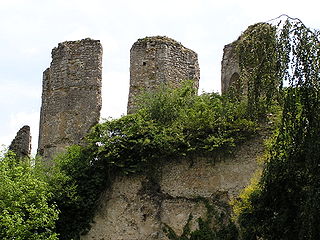
The Battle of Vendôme was a battle of the Franco-Prussian War, it lasted from December 14 — 17, 1870 in Vendôme, Loir-et-Cher, France. In this fierce fighting, the X Army of the Kingdom of Prussia under the command of General Konstantin Bernhard von Voigts-Rhetz and the 2nd Army of Prussia which was commanded by Prince Friedrich Karl, attacked the French Army of the Loire by Minister Antoine Chanzy and Admiral Bernard Jaureguiberry who was a former navy officer of France. The Prussians defeated the French in a gun battle on December 16 and finally won the battle. With this victory, the Germans attacked the enemy's right flank and forced the French forces to withdraw from their stronger defensive position at Fréteval, where they engaged another Prussian army indecisively. The victory at Vendôme also brought the Prussian armies some French prisoners and weapons, while the disadvantage of Chanzy's army forced him to hastily withdraw to Le Mans.
The Battle of Monnaie, also known as the Battle of Tours was a battle of the Franco-Prussian War. It took place on the December 20, 1870 at Indre-et-Loire, France. During this engagement, a Hanover division of the Imperial German Army under the command of General Schwarzkoppen, belonging to Legion X under the command of Konstantin Bernhard von Voigts-Rhetz attacked and won the victory against an army of Garde Mobile's 234 led by General Ferry Pisani, driving the French to Langreais. This victory allowed the Germans to enter and occupy the city of Tours.












